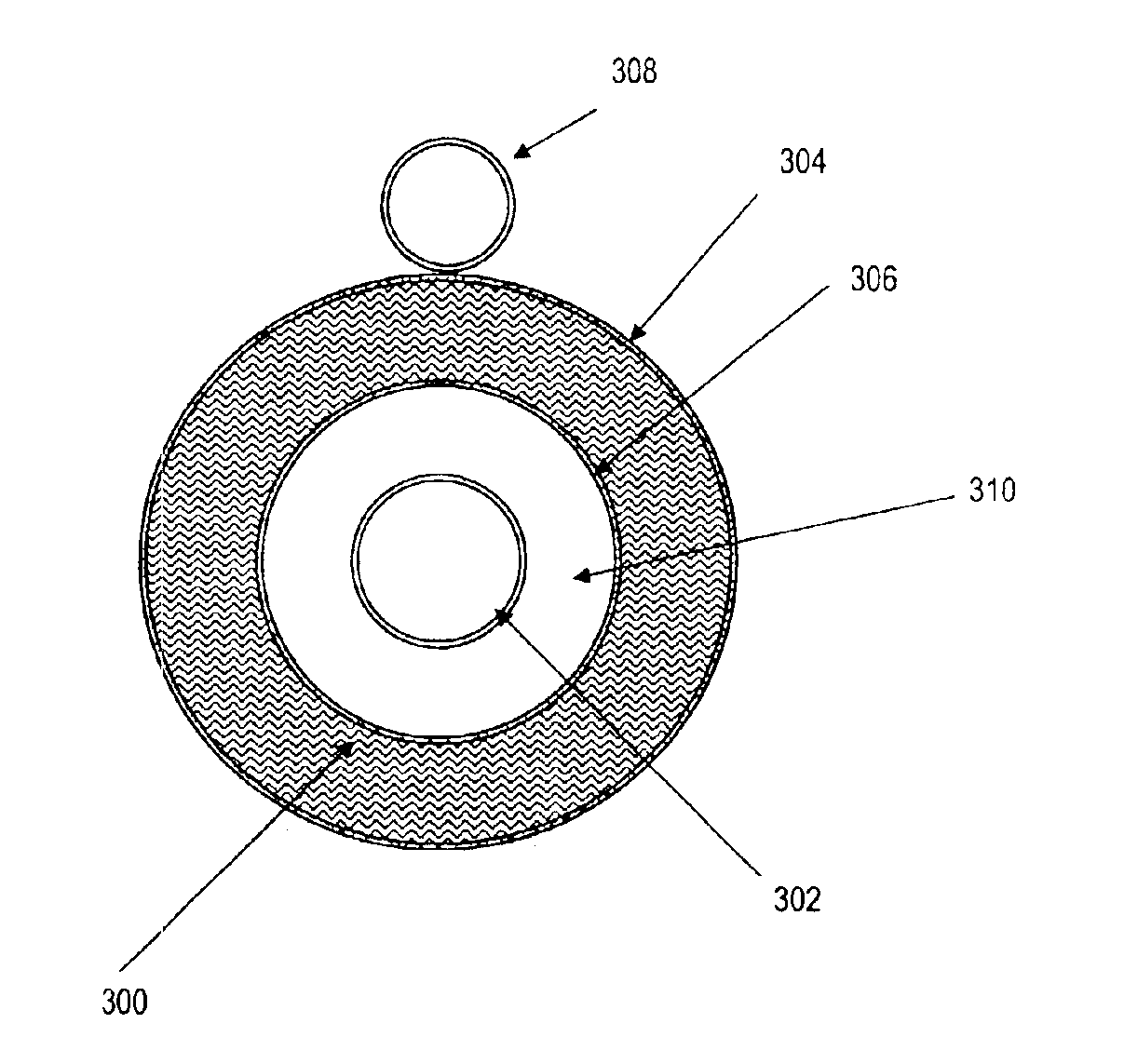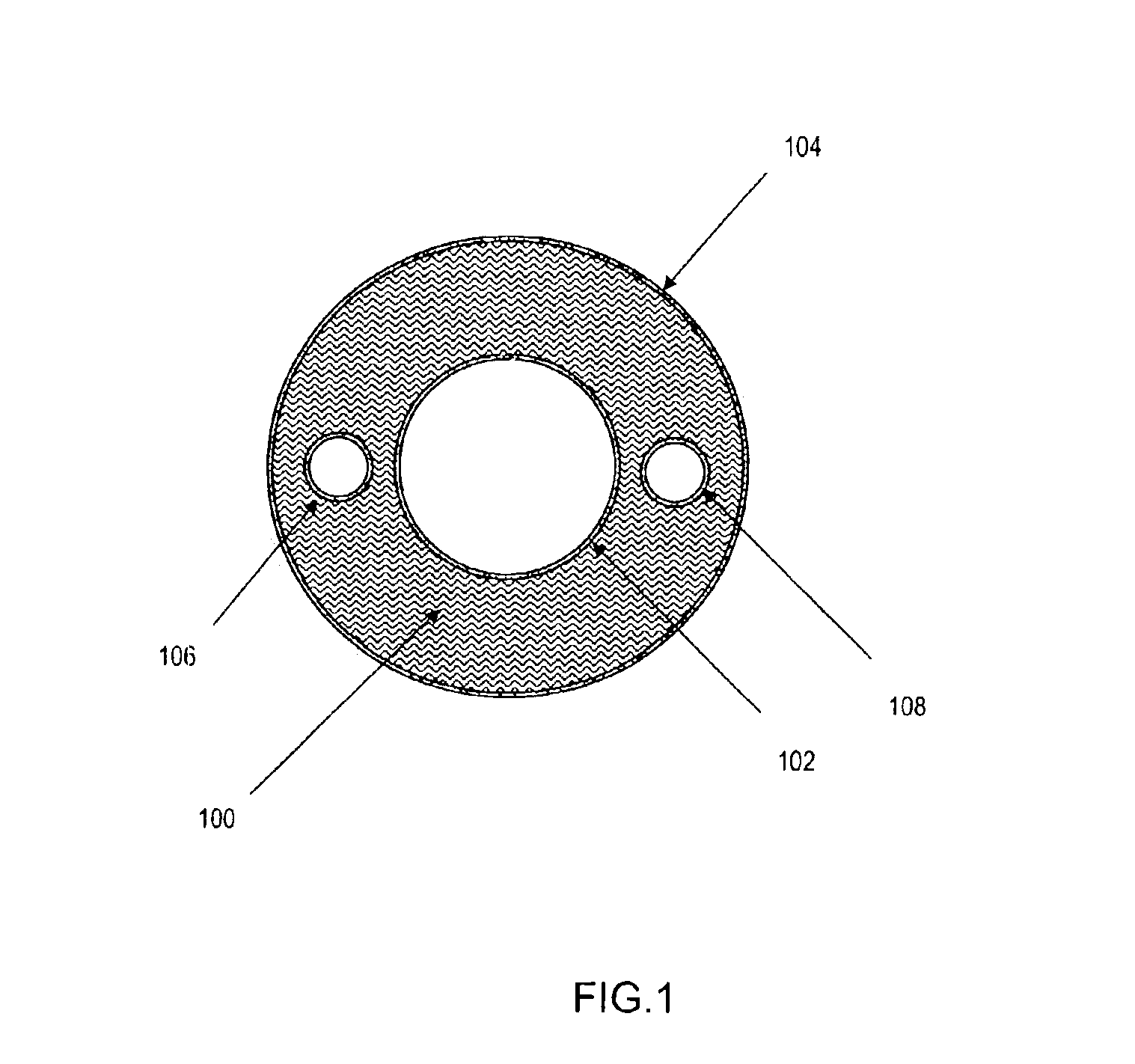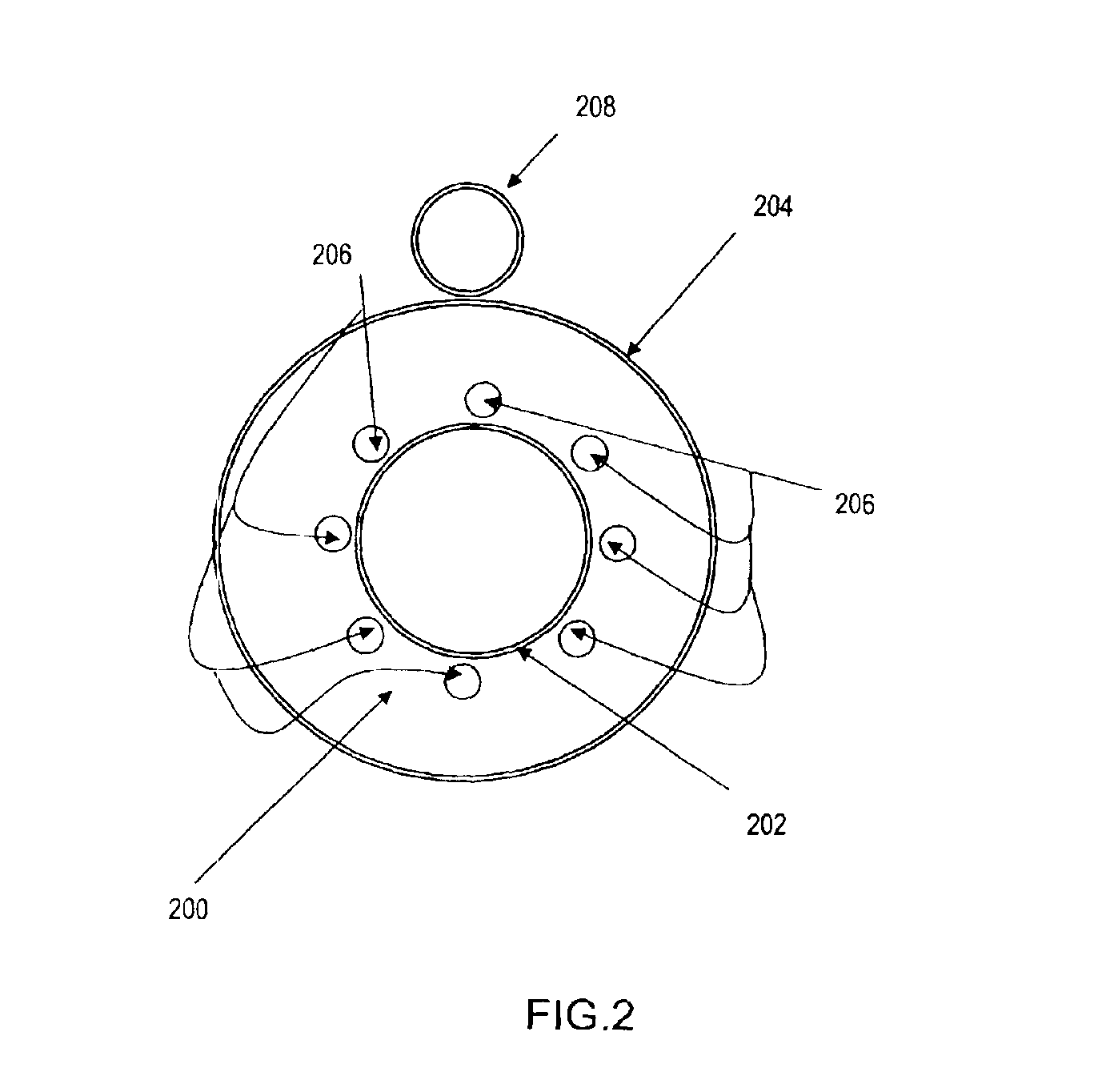Active heating of thermally insulated flowlines
a flowline and active heating technology, applied in the direction of fluid removal, insulation, borehole/well accessories, etc., can solve the problem that conventional pipe-in-pipe systems may not be able to provide sufficient thermal insulation, and achieve the effect of relatively trouble-free production, cost-effective and reliable, and cost-effectiv
- Summary
- Abstract
- Description
- Claims
- Application Information
AI Technical Summary
Benefits of technology
Problems solved by technology
Method used
Image
Examples
Embodiment Construction
[0017]Referring first to FIG. 1, this shows the schematic transverse cross-section of a pipe-in-pipe (“p-i-p”) thermally insulated hydrocarbon-transporting flowline wherein hot hydrocarbon liquids (or hydrocarbon liquid / gas mixtures) are transported along the inner pipe, and are thermally insulated by an annular blanket of thermally insulating material 100 substantially filling the annulus between the inner hydrocarbon-transporting flowline pipe 102 and the concentric outer carrier pipe 104. A hot water input pipe 106 is located radially mid-way between the inner and outer pipes, and extends along the length of the pipe-in-pipe flowline. Diametrically opposite the hot water input pipe 108, a hot water return pipe is located radially mid-way between the inner and outer pipes, and extends along the length of the pipe-in-pipe flowline.
[0018]The pipe may be made in double walled sections or assembled from inner and outer pipe sections as described in co-pending applications of associate...
PUM
 Login to View More
Login to View More Abstract
Description
Claims
Application Information
 Login to View More
Login to View More - R&D
- Intellectual Property
- Life Sciences
- Materials
- Tech Scout
- Unparalleled Data Quality
- Higher Quality Content
- 60% Fewer Hallucinations
Browse by: Latest US Patents, China's latest patents, Technical Efficacy Thesaurus, Application Domain, Technology Topic, Popular Technical Reports.
© 2025 PatSnap. All rights reserved.Legal|Privacy policy|Modern Slavery Act Transparency Statement|Sitemap|About US| Contact US: help@patsnap.com



